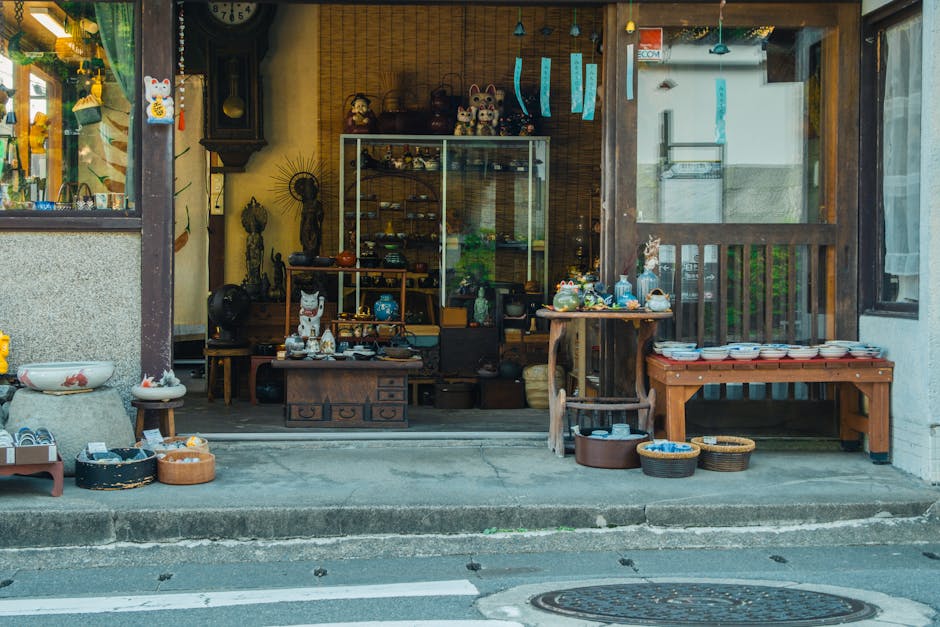
As a curator of crafts, it is with a heavy heart that I share news of a significant challenge facing one of Japan's most cherished artistic traditions. Tobe-yaki, a distinguished porcelain craft designated as a Traditional Craft of Japan, finds itself in a precarious situation, a "pinch" that threatens its very existence as we know it.
The Enduring Legacy of Tobe-yaki
Originating in the town of Tobe, Ehime Prefecture, Tobe-yaki has a history stretching back over 240 years. Renowned for its distinctive thick, strong white porcelain and beautiful indigo-blue designs, often hand-painted with a pigment called Gosu, Tobe-yaki pieces are not merely decorative but embody a robust practicality. From everyday tableware to elegant vases, each item reflects the artisan's exceptional skill, a meticulous process of shaping, firing, and decorating that has been passed down through generations.
The strength and durability of Tobe-yaki are legendary, making it a favorite for both daily use and special occasions. Its aesthetic, while deeply rooted in tradition, possesses a timeless quality that allows it to seamlessly fit into modern life, gracing contemporary tables with its understated elegance and handcrafted charm. The commitment of these artisans to their craft, their unwavering dedication to producing pieces of both beauty and utility, is truly inspiring.
The Unforeseen Challenge: A Crucial Raw Material at Risk
The current crisis for Tobe-yaki stems from a fundamental element of its creation: its unique raw material. The distinct character of Tobe-yaki porcelain comes from a specific type of porcelain stone, known as Toseki. This particular stone is integral to achieving the pottery's characteristic strength, subtle texture, and luminous white base that perfectly showcases the indigo blue motifs.
Tragically, the sole producer of this essential Toseki, a kiln whose president has been the exclusive supplier, has been forced to halt operations. The reason for this drastic measure is the president's ill health. This situation has led to an immediate order suspension for the crucial raw material. Adding to the gravity of the situation, the producer has stated there are currently "no plans to resume" production.
The Heart of the Crisis: A Single Point of Failure
The fact that this particular kiln president is the only producer of the specific Toseki required for Tobe-yaki underscores the profound vulnerability of the craft. It highlights a common, yet often overlooked, aspect of traditional arts: their reliance on a delicate ecosystem of specialized skills and unique resources. The materials themselves are often as unique and irreplaceable as the artisan's touch. When a single, critical link in this chain breaks, the entire tradition faces an existential threat.
The artisans of Tobe-yaki, with their exceptional skills and dedication to material integrity, now face an uncertain future. Without a steady supply of their foundational raw material, the continuation of their centuries-old techniques becomes incredibly challenging, if not impossible. This situation is a poignant reminder of the intricate connections that sustain our cultural heritage and the deep personal commitment required at every stage, from the earth to the finished masterpiece.
Looking Ahead: Preserving a National Treasure
The current predicament is indeed a "pinch" for Tobe-yaki. It is a moment that calls for reflection on how we value and support our traditional crafts. The loss of such a vital raw material producer could have far-reaching consequences, potentially altering the very essence of Tobe-yaki and, by extension, diminishing a significant piece of Japan's rich cultural tapestry.
While the path forward is unclear, the hope remains that solutions can be found—whether through innovative sourcing, support for the existing producer, or a collaborative effort to ensure the continuity of this remarkable craft. For now, we are reminded of the fragility of beauty and the critical importance of every individual, every material, in sustaining the traditions that enrich our lives.
Comments
Post a Comment